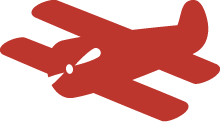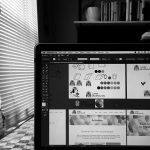Imposter Syndrome: My Ongoing Journey
We’ve all been there. The feeling that you’re not good enough, you’re not qualified enough, you don’t have the proper skills… Over the past year, this is a struggle I’ve felt in a very real sense as I’ve graduated and applied for jobs and sought to feel like a real life “adult.” Though I’ve currently landed as a freelance designer, I still often ask myself the big what if? What if I had more training, what if I had more experience, what if…? So here’s my story about my struggle with imposter syndrome (really it’s more of a designer coming of age story for what it’s worth).
The truth is, you’re good at something, but that something may not be what everyone expects you to be good at – or what you expect yourself to be good at, which is probably more likely.
If you want to know more about me, maybe you’ll enjoy this “memoir” of sorts. And if you’re struggling with not knowing where you fit in or not feeling good enough, maybe this will serve as a sort of encouragement. The truth is, you’re good at something, but that something may not be what everyone expects you to be good at – or what you expect yourself to be good at, which is probably more likely.
Design School: Everyone Is Better at This Than Me
I had known since high school that I wanted to study graphic design, so after earning my associates degree, I transferred to the University of Kansas. (Quick side note: KU’s design program is outstanding.) When I said that I wanted to be a graphic designer, I expected it to be a lot more “tech-y,” – you know, websites and stuff – so when I was thrown in with a bunch of phenomenal artists, I felt extremely out of place.
I Don’t Fit In Here
My first year in design school was discouraging to say the least. When I looked around at the designs everyone else was making, I couldn’t see how what I was creating even came close. I had numerous meltdowns in my dorm room (as well as a few in my professor’s office, much to her distress). I was busting my butt, but couldn’t seem to wrap my head around the basic concepts of design. That first year at KU, I absolutely hated design. I came very close to dropping out, changing majors, but I’m so glad now that I didn’t.
During my junior year, one of our classes was entitled Design for Social Interaction. To bastardize a summary of the course, it was a semester class about user experience. Most of my classmates hated the class. But I loved it. I finally found a place where I could thrive in the world of design.
A Good Teacher Makes All the Difference (Everyone Says That, But I Mean It)
The professor of that course (I’ll name drop because his instruction and encouragement revolutionized the way I saw myself as a designer), Tyler Galloway (now at the Kansas City Art Institute), somehow recognized that, although I might struggle with design aesthetic and design principles, I excelled at design thinking. I knew how to apply design to solve real world problems. While my final products may not have been as frilly or beautiful as those of my classmates, the concepts and functionality tended to be a step ahead.
This taught me something about the way I think. Unlike many designers who focus on form, I am fixated on function. Additionally, while my brain might not be naturally geared to crank out top notch compositions or layouts, I was the one who had the skills to figure out how to execute just about anything – I can troubleshoot and problem solve and workaround the hell out of the parameters I’m given. Tyler was the professor who pointed out to me that it was okay that I differed in this way and that there was actually a need for rogue designers such as myself. It took me a while to actually believe it – and to this day, I sometimes have my doubts!
I’m an Intern, Now What?
At the beginning of my senior year, I took an internship with a small design firm located in downtown Lawrence. My boss recognized that I had a different skillset, but he also didn’t allow me to make excuses in my areas of weakness. On one of the first logo projects I worked on, he told me time and time again, “You have a good idea. I want you to figure out how to execute it. Don’t just give up because you can’t figure it out or you don’t know how to create it in Illustrator.”
Stop Making Excuses
I spent an unreasonable number of hours sketching and manipulating Illustrator to try and mimic the image I was seeing in my imagination. I finally created a logo that I loved. The client didn’t love it, but the client was wrong. (That’s the thing with clients. Sometimes they’re wrong and you know they’re wrong, but hey, they’re paying you, not the other way around.)
Sometimes, frustration should be a tool we employ to make things even better. When you stop being frustrated, maybe you’ve finally reached a good solution.
That project may have frustrated the hell out of me, but it taught me not to stop because I was frustrated. Sometimes, frustration should be a tool we employ to make things even better. When you stop being frustrated, maybe you’ve finally reached a good solution. I worked there for two years. My boss had me pretty well figured out.
Frustration Is Part of the Design Process
One of the last projects I worked on there was a website where the client needed some customized code so his customers could upload their artwork and see how it would look printed on different-colored t-shirts. I HTMLed and CSSed and JavaScripted and, more than once, determined I wasn’t fit for the task and told my boss as much. His response was typically to 1- look like he was really busy on something and 2- tell me to keep working on it and he’d come look in a minute and then 3- he’d forget to come look in a minute and it would be 30 minutes or an hour and 4- I’d finally figure out whatever it was and get it to work.
It was a while before I realized he did that on purpose because he knew me better than I knew myself. The frustration I experienced when I couldn’t figure something out just made me that much more excited when I finally got it to work. My boss had the wisdom to recognize that the frustration was a part of my design process.
Where My Skills Fit In
One of the hardest things I’ve had to figure out as a designer is where my skillset fits in the design world. When I began looking for a job, I was totally unsure how to market myself. No, I will never be amazing at aesthetic design even though that’s an area where I’ve grown immensely. Yet at the same time, I don’t have a full developer skillset. I can write HTML and CSS code all day long. (No, I’ve never worked with Bootstrap. Yes, I know I should figure that one out, but I haven’t yet, okay?) JavaScript I can “steal” and then manipulate to do what I want and then show it to my friend who will debug my non-working code.
So my development skills are functional, yet rudimentary. I would love to dive into the world of user experience or design research, but everyone wants you to have experience in user experience if they’re going to hire you.
I had grown to love design (never imagined that would happen when I was a sophomore), but I saw myself in a different role than many of my classmates. I wanted to do something tech-y, analytical, research-y… But I didn’t know how all of those things would come together in a job description. Actually, I still don’t know.
I Took the Leap (Prematurely)
In March, I told my boss I would be leaving in May. I had the – I thought perfectly reasonable – expectation that job searching for two months would be sufficient. Boy, was I wrong. August rolled around and I still hadn’t found a big girl job. I applied for web designer jobs, web developer jobs, UX jobs, UI jobs, digital designer jobs… I even went so far as to apply for jobs that just listed “graphic designer” as the job title – blehch!
Only three of the hundreds of companies I applied at brought me in for interviews and I received hundreds of the “Thank you for your interest in the [insert job title here] position. We regret to inform you that, at this time, we are pursuing other candidates…” emails. It was discouraging.
Writing cover letters became a painful chore. It got to the point where I felt like I was being dishonest about the skills I had, even though I wasn’t. Networking became a chore when usually I just enjoyed meeting new people. It seemed like nothing I was trying was working. And I began to feel like an inferior designer with a worthless skillset.
Where Red Airplane Design Came From
Enter Red Airplane Design, my freelance brain child. The most basic explanation is that I couldn’t find a big girl job, so I created my own. But here’s the long story. Red Airplane Design LLC actually exists as the result of a happy accident. (Everyone asks me about why I chose the name Red Airplane Design. Sorry to let you down, but I’m not going to talk about that in this post. I’ll write another post about it later, I promise.)
Happy Clients Make Happy Designers (Cause They Do Nice Things Cause They Appreciate You)
I’d been doing freelance work off and on through my senior year of college and the year following graduation. In a roundabout way, I ended up doing a lot of work for a law firm – I rebranded the firm and designed and developed their website. The partner who had brought me on board was really appreciative of the work I had done for them and told me if I ever wanted to establish an LLC to let her know. She asked me about it enough times that I finally got tired of her asking and said, “Go ahead, let’s just do it.” So she did all the paperwork, I signed it and voilà, Red Airplane Design LLC was born. That was in March, right around the time I told my boss I would be leaving in May.
At the time, I had no intentions of the LLC becoming a full-time gig – not even a part-time gig for that matter. I just thought it would be a way to better organize my finances and expenses for taxes and I would just freelance from time to time when I got bored at my big girl job. After leaving my job in May with no new job waiting to welcome me in, freelancing became my safety net and I spent a lot of time determining what my niche would be.
I’m Doing What I Love. How Did That Happen?
Essentially, the law firm was my ideal client so I largely based my brand on attracting those kinds of clients. They were a client who recognized the importance of a quality brand image, but didn’t know how to portray that to their audience and were willing to trust me to help them through that. Really what I had done for them was user experience design without even realizing it.
What I love about Red Airplane Design is it allows me to marry the things I love about design. I get to research target audiences and develop brands that market well to them (research-y stuff). I get to develop cool user interfaces in websites and neat packaging materials (user experience stuff). I get to develop and code the websites that I design (tech-y stuff). You know, I’m pioneering and doing the cool shit I really want to do. I’m just not doing it in the corporate context like I’d imagined I would be.
The Dream Versus Reality
Funny story. If you’d have asked me six months ago where I saw myself today, I’d have told you I wanted to be working in house for a company like Garmin or Cerner or VML or Dimensional Innovations (and that’s if we’re talking strictly the Kansas City market). I wanted to be experiencing life as a corporate designer, doing UX or digital design or something like that. If you’d asked me where I saw myself in five or ten years, I might have responded that I wanted to be freelancing full time. I wouldn’t have dreamed that this is where I’d be now.
Freelancing has its ups and downs. It’s euphoric to work with great clients, it’s exciting to turn in fun, quality projects. Yet each time I wrap up a project, there’s a moment of panic. “That’s over, so… where will the next paycheck come from?”
Success Is All About How You Measure It
Do I feel successful? That would depend on the day. In August, I took a part time job working retail at Advance Auto Parts in the evenings to help pay the bills. As a female with a degree in design and two years of professional experience, working for next to nothing in the aftermarket auto parts retail industry does not make me feel like a successful designer.
But when I get calls from new clients who say, “So and so told me about your work on such and such project. I’d like to meet with you and see what you can do for my company,” I do an ecstatic happy dance. And then when a client accepts my proposal, I do another happy dance. Those interactions make me feel successful. Then when a client is thrilled with the work I’ve done or they send an email introduction recommending me to a friend or colleague, those interactions make me feel less like an imposter. They make me feel less like I’m duping someone into hiring me and then providing sub-par work.
The Struggle Will Never End
Yet I still struggle with not feeling good enough. I’m constantly thinking I need to gain new skills, take online classes, attend webinars, network, etc. to better myself, improve my skillset… Maybe that will always be a struggle. Maybe finding where my skillset fits in the design world will always be a struggle. I still apply for jobs from time to time – I applied to two jobs recently and got that same canned “Thanks for your interest, but…” email. Those emails discourage me, so I think I’m done applying to jobs for now. Maybe freelancing is where I’m supposed to be. I really do enjoy it. Am I good at it, am I qualified? I guess that would depend on who you ask…



